
The Greeks of Cappadocia, in central-eastern Anatolia, created their own flourishing culture in ancient times that thrived in the region for millennia. However, the Great Catastrophe of Smyrna and other ethnic cleansing that led up to that atrocity wiped most of the remnants of Greek culture off the map in that part of the world.
Once home to a Greek people who established trade ties there beginning as far back as 1,300 BC, Cappadocia, located in modern-day Turkey, still has traces of the brilliant Byzantine-era culture created by the Greeks in Asia Minor, including churches and nearly-complete underground cities.
The original populations of Cappadocia included the Hittites, whose Indo-European languages in some cases, such as the Phrygian, were closely related to Greek. However, due to the burgeoning Greek influence there, all the inhabitants of the area become entirely Greek-speaking by at least the late Roman period, during the 5th century AD.
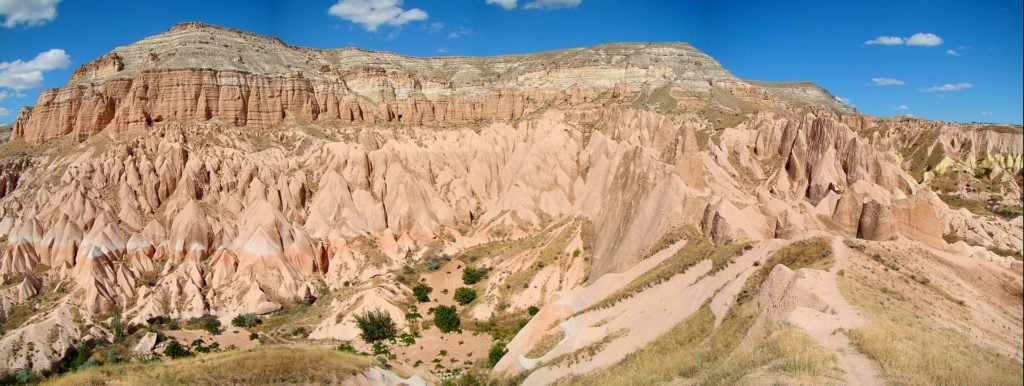
Today, almost nothing is left of the brilliant culture of the ancient Greeks and their later descendants, having been swept away by invading Turks and others and finished off by the exchange of population that occurred as part of the Treaty of Lausanne in 1923.
That era saw the last of the proud Greek presence in Cappadocia, which once was a byword for Byzantine Christianity and had a unique, vibrant culture and distinct dialect all its own.
Before Greeks and Greek culture arrived in Asia Minor, the area was controlled by the Hittites. Mycenaean Greeks set up trading posts along the west coast around 1300 BC and soon started colonizing the coasts, spreading Hellenic culture and language inland as they went.

In the Hellenistic era, following the conquest of Anatolia by Alexander the Great, Greek settlers began arriving in the spectacular mountainous regions of Cappadocia. This Greek population movement of the 3rd and 2nd centuries BC solidified a Greek presence in Cappadocia.
As a result, Greek became the lingua franca of the region’s natives. It would become the sole spoken language of the region’s inhabitants within three centuries and would remain so for the next one thousand years.
After the death of Alexander the Great, Eumenes of Cardia, one of the Diadochi of Alexander the Great, was appointed satrap of Cappadocia, where he set up new Greek villages and distributed control over them to his associates. Eumenes left behind administrators, judges and selected garrison commanders in Cappadocia.
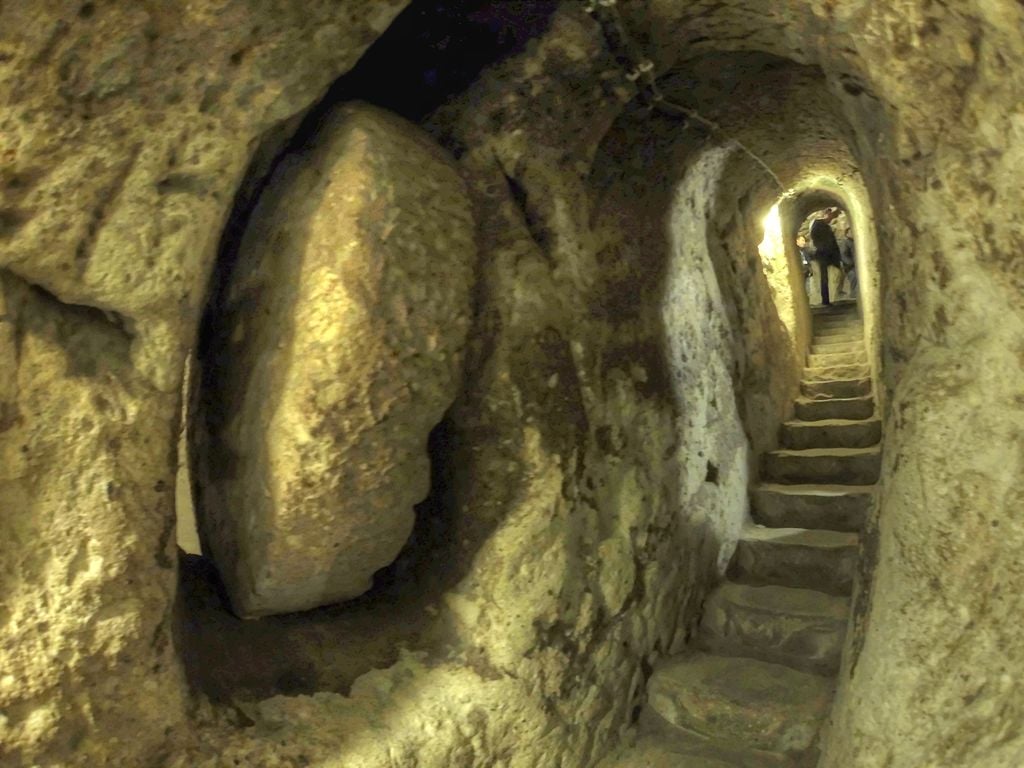
In the following centuries, the Seleucid Greek Kings founded many Greek settlements in the interior of Asia Minor, and this region would become popular for the recruitment of soldiers. Unlike other regions of Asia Minor where Greeks would settle in cities, most of the Greek settlements in Cappadocia and other interior Anatolian regions were villages.
The Hellenistic Kings would make new Greek settlements in Cappadocia and other surrounding regions in order to secure their hold on this volatile region, and under their rule, Greek settlements would increase in the Anatolian interior.
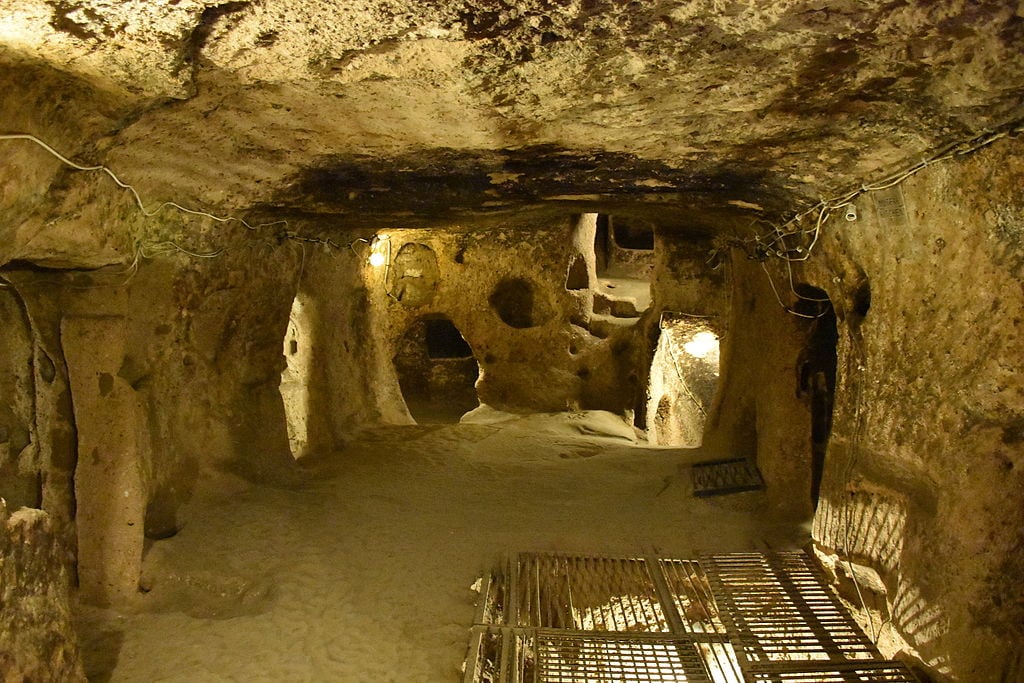
By late antiquity, the Cappadocian Greeks had mostly converted to Christianity. They were so thoroughly devout that by the fourth century AD, the region of Cappadocia served as a stronghold for Christian monasticism and was of great significance in the history of early Christian thought.
The city of Caesarea had originally been centered on an even more ancient acropolis. In the fourth century AD, a new city was built on the nearby plains around a church and monastery built by St. Basil the Great, the bishop of Caesarea.
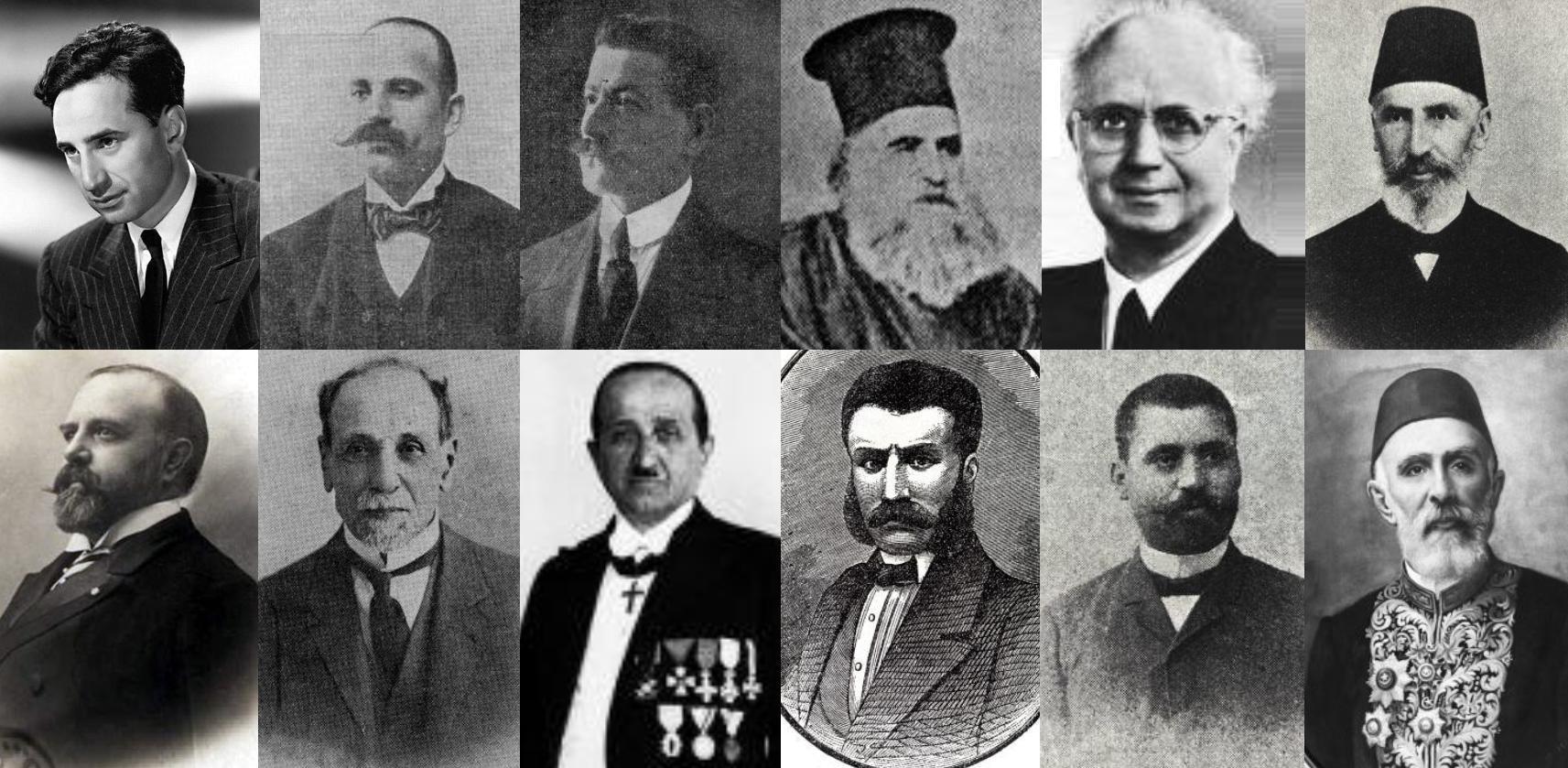
Cappadocia produced three extraordinary prominent Greek patristic figures, known as the “Cappadocian Fathers.” They were Basil the Great (c. 330–79); Gregory of Nazianzus (c. 330–c. 389 AD), who was later known as Saint Gregory the Theologian); and St. Basil’s brother Gregory of Nyssa, who died around the year 394.
Saint Macrina the Younger was another remarkable product of Cappadocia who figured prominently in Byzantine Christianity, devoting her life to God after the death of her betrothed.
Among her nine siblings were two of the three Cappadocian Fathers, her younger brothers Basil the Great, whose writings were said to be second only to the scriptures in formulating the theology of the early Christian Church, and Gregory of Nyssa; her other brothers included Peter of Sebaste and the famous Christian jurist Naucratius.
Byzantine Cappadocia
By the fifth century, the Greek communities of central Anatolia were becoming actively involved in affairs of the Eastern Roman Empire, and some Greek Cappadocians such as Maurice Tiberius (c. 582–602) and Heraclius would even serve as Emperors.

Because they were living in such a volatile region, the Cappadocian Greeks created elaborate underground cities in the volcanic formations of eastern Cappadocia and would take refuge in them during times of danger. The Cappadocian Greeks hid in these rock-cut underground towns from many raiders over the next millennium, inclduing from 9th century Arab invaders, 11th century Turkish conquerors, and 15th century Mongols.
Author Kosta Dalgeorgas states of the great religious feeling that still emanates from the area “While visiting these cave churches, one gets a sense of the break early Christians made with the material world, a world full of wealth and war.”
“In these locations, one can feel the strong spirituality that has always marked Orthodox Christianity and can understand how the early founders of Christianity sought to communicate with and understand God,” said Dalgeorgas.
Incredibly, as late as the 20th century, the local Cappadocian Greeks were still using the underground cities as refuges (Greek: καταφύγια) from periodic waves of Ottoman persecution. The most famous of these ancient underground cities are in the Cappadocian Greek villages of Anaku-Inegi (Ανακού) and Malakopi-Melagob (Μαλακοπή).
As late as the early years of the 20th century, the local population of Cappadocian Greeks were still using the underground cities to escape periodic persecutions.
For example, Richard MacGillivray Dawkins, a Cambridge linguist who conducted research from 1909 to 1911 on Cappadocian Greek speakers, recorded them heading for the safety of the caves as late as 1909: “When the news came of the recent massacres at Adana, a great part of the population at Axo took refuge in these underground chambers, and for some nights did not venture to sleep above ground.”
All Greek people were systematically expelled from these villages in 1923, and they are now known as Derinkuyu and Kaymakli. These underground cities have chambers extending to depths of over eighty meters.
The Kaymakli underground city—like the others, hewn out of tufa, a calcareous rock often found near hot springs—is remarkable for its size.
Currently, only a small portion of the space is available to the public. Located on the second floor is a church with a nave and two apses. Located in front of the apse is a baptismal font, and on the sides along the walls are seating platforms. Names of people contained in graves here coincide with those located next to the church. The church level also contains some living spaces.
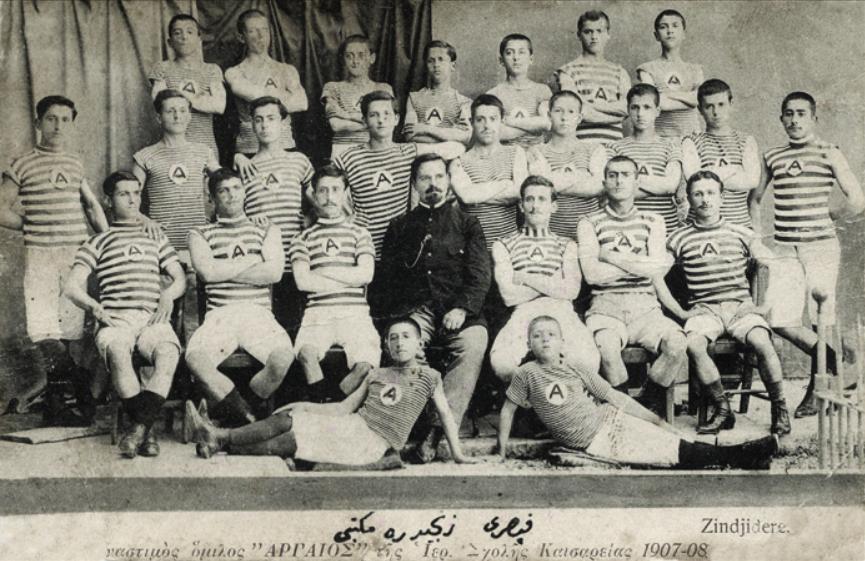
In the Middle Ages, Cappadocia had hundreds of cities and villages. Rock-cut churches were carved out of the volcanic formations of eastern Cappadocia and decorated with painted icons and Greek writing. Over 700 of these churches, constructed between the 6th and 7th centuries, have been unearthed in modern times.
Many of these monasteries and churches had continued to be used until the Great Catastrophe and the population exchange between Greece and Turkey in the 1920s.
The Greek inhabitants of these districts of Cappadocia were sometimes referred to as “Troglodytes” since they used caves for shelter. In the 10th century, Leo the Deacon recorded a journey to Cappadocia by Nikephoros Phokas; in his writings, he mentions that its inhabitants were called Troglodytes in view of the fact that they “went underground in holes, clefts and labyrinths, as it were in dens and burrows.”
When the Byzantines re-established control of Cappadocia between the 7th and 11th centuries, yet more churches were carved into cliffs and rock faces in the Göreme and Soğanlı region. In the Middle Ages, the Cappadocian Greeks also buried their religious figures in and around monasteries.
In recent years mummified bodies have been found in abandoned Greek monasteries around Cappadocia, and many, including bodies of mummified babies, are on display in the Nigde Archaeological Museum.
By the 12th century, all of Anatolia was overrun by Turkmen tribes from Central Asia. These exceptionally warlike nomads had devastated many regions of Anatolia, destroying the culture of the indigenous Greeks as they went.
The Anatolian Greek population rapidly diminished under Turkish rule, owing to mass conversions to Islam, slaughter, or exile to Greek territories in Europe.
The Byzantine Empire survived as a political unit until the final Ottoman invasion and sack of Constantinople in 1453. Under Ottoman rule, Christians and Jews became “dhimmis,” distinctly subjugated, second-class non-citizens who had to pay heavy taxes (jizya) to be able to live there as non-Muslims.
Smyrna Catastrophe
As the Greek population was annihilated in the entirety of Anatolia, so was their cultural and religious heritage by the year 1923 as part of the great population exchange and the atrocity of the Smyrna Fire, which decimated the Greek presence of Constantinople.
Innumerable Greek churches, monasteries, school buildings, and other properties in Cappadocia were either destroyed outright or used for other purposes, including mosques.
Professor Hannibal Travis writes that during this time of horrors “Greek men became victims of murder, torture, and starvation; Greek women suffered all this and also became slaves in Muslim households; Greek children wandered the streets as orphans ‘half-naked and begging for bread’; and millions of dollars’ worth of Greek property passed into Muslim hands.”
Travis adds that “American diplomatic and journalistic sources confirmed Ambassador (James) Bryce’s charge of an Ottoman policy to exterminate Christians other than the Armenians.”
Henry Morgenthau, the American banker and Treasurer Secretary who is widely regarded as a principal source of information on the Armenian Genocide, stated that “The story which I have told about the Armenians I could also tell with certain modifications about the Greeks and the Syrians,’ as Assyrians were often known to the West.”
According to Morgenthau, absent a governmental intention to exterminate the Christians of the empire, it would be nearly impossible to explain how the massacres, rapes, deportations, and dispossessions of the Armenian, Assyrian, and Greek Christians living in the Ottoman Empire at the time of World War I could have taken place on such a vast scale.
“How could such a remarkable degree of coordination and common purpose in slaughtering civilians, ravaging women, orphaning children, and stealing money and property have emerged without organization and direction from above?” inquired Morgenthau. “Indeed,” he said, “it takes a little searching to uncover abundant evidence of planning for genocide.”
Cappadocian Greek descendants all over Greece, diaspora today
Today, the descendants of the proud Cappadocian Greeks reside in Greece and in many other Western countries, including the entire diaspora. When they came en masse to the mainland of Greece in the 1920’s, the population mostly resettled in Serres, Xanthi, and Karvala.
Decades later, during the the 1960’s to 1980’s, many of their descendants moved to large cities of the country, especially Athens, Thessaloniki, and Alexandroupoli among others. They are now a part of the fabric of Greece and many of the communities of the diaspora.
Elia Kazan (born Elias Kazantzoglou) a Greek-American film director, producer, writer, and actor, was born in Constantinople to Cappadocian Greek parents who were originally from Kayseri (Caesarea).
Some of the horrors that the Greeks of that area were forced to endure are depicted at the beginning of his seminal black and white film America, America portraying the experience of a Greek immigrant born in Anatolia who sets out to find his American dream.
The story was adapted from Kazan’s book, which describes the incredible Odyssey of his uncle, who grew up in Cappadocia while the Greek community was undergoing increasing persecution. After being sent by his father to travel—on foot—with the entire family savings to Istanbul he was supposed to establish a new life there and eventually bring the rest of the family to live with him in the city.
However, the uncle couldn’t resist the siren song of America, and he set off on a much longer journey, later bringing his entire family over to live with him in the United States.
The film won an Academy Award in 1963, but tragically, by the time it was released, the millennia-old Greek civilization in Cappadocia had already been for the most part wiped off the map for four decades.
Cappadocian Greek is now considered an “extinct” language in Turkey, according to the UNESCO Interactive Atlas of the World’s Languages in Danger.
However, the catastrophes and atrocities of the past have not been able to entirely erase the traces of the brilliant Cappadocian culture. Even today, there are at least eighty Christian structures, including churches and monasteries, still standing in Cappadocia despite the wholesale destruction of many others over the decades.
In Derinkuyu (Malakopea), which was once one of the finest underground cities in Asia Minor, a perfectly complete underground city, including a chapel, is still extant, a living testament to the history of the Greek people there.
In 1963, the tunnels were rediscovered after a resident of the area reportedly found a mysterious room behind a wall in his home. Further digging revealed access to the tunnel network.
In 1969, the site was opened, with about half of the underground city currently accessible to visitors.
Other notable figures who were Cappadocian Greeks include Leonidas Kestekides (1876–1954), a chocolate manufacturer from Nigde, Cappadocia and founder of the internationally famous Leonidas company in Belgium.
Prodromos Bodosakis-Athanasiadis, who lived from 1890 to 1979, was one of the most important figures in 20th century Greek industrial history while Petros Petridis, who lived from 1892 to 1977, was a prominent Greek composer and conductor.
St. Paisios of Mount Athos, who lived from 1924 to 1994 and was born Arsenios Eznepidis in Farasa, also carried on the proud heritage of his people, continuing the long Christian tradition of Cappadocia.
See all the latest news from Greece and the world at Greekreporter.com. Contact our newsroom to report an update or send your story, photos and videos. Follow GR on Google News and subscribe here to our daily email!



